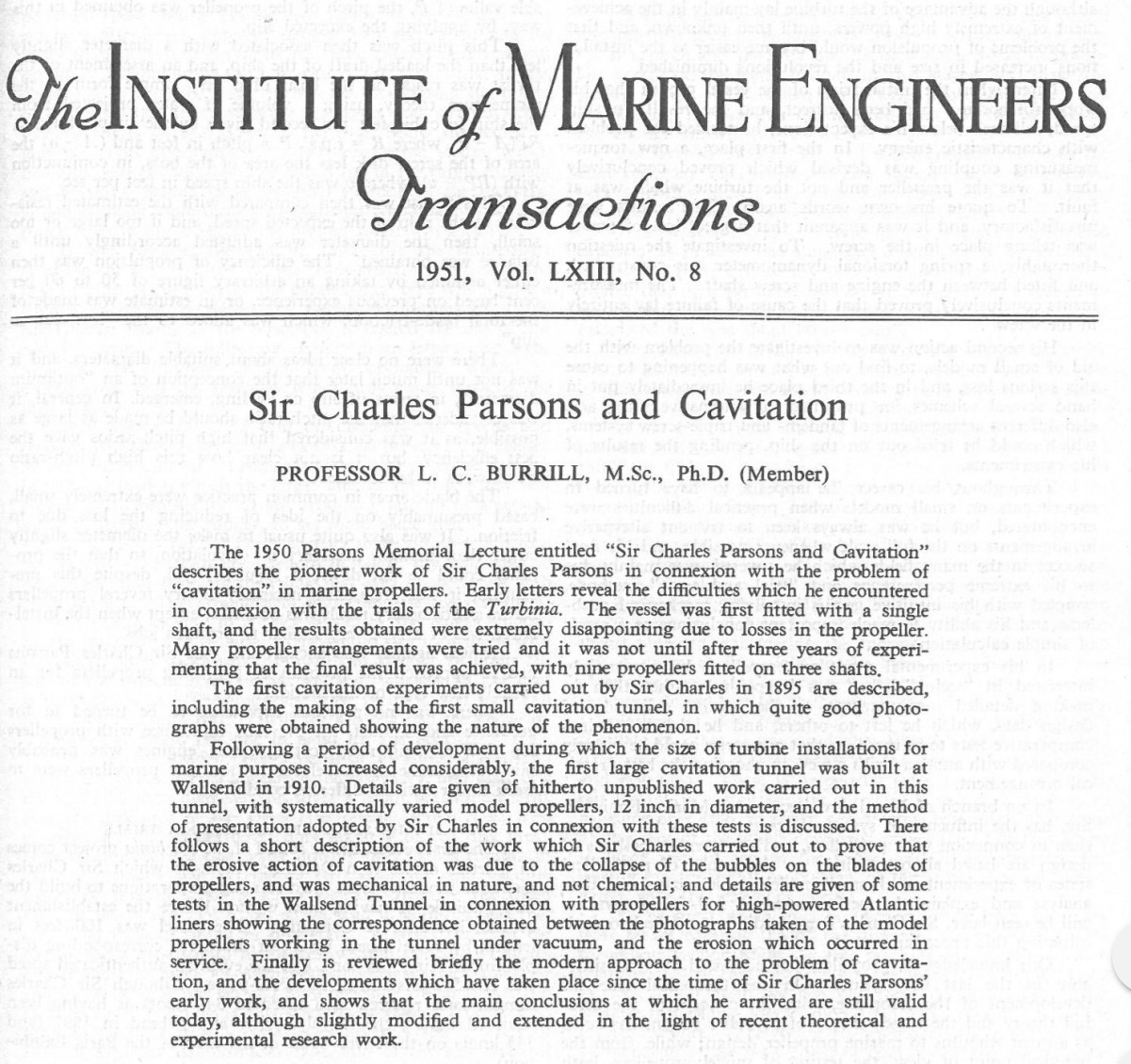Cavitation
What is Cavitation All About?
At what temperature does water boil?
Be careful - it's a trick question.
Water only boils at 100oC when at sea level. On top of Mount Everest water boils at 71oC (making an awful cup of tea). The reason - because the air pressure is lower.
This means, if we lower the surrounding pressure sufficiently, water can ‘boil’ without any change in temperature. When this happens underwater we call the phenomenon ‘cavitation’. To be more precise, cavitation is the formation and subsequent implosion of bubbles in a liquid due to rapid changes of pressure.
This is especially important in the design and operation of ships – particularly when we look at the propellers, which act in a similar way to aircraft wings.
Fluid passes over a specially shaped surface (a foil) creating high pressure on one side and low pressure on the other. This produces the lift from a wing to push a plane up into the sky, and the thrust from a propeller to push a ship through the water.
But the complex pressure changes over a propeller blade can become so severe that the water cavitates (it effectively boils). This can cause huge problems for the ship ranging from reduced power, unwanted noise and even rapid erosion of the propeller blades. They essentially get eaten away by the imploding cavitation bubbles.
Cavitation: A North East Innovation
The study of cavitation originated in the North East of England and continues to be a major international research subject with significant contributions from Newcastle University.
Sir Charles Parsons constructed the world’s first cavitation tunnel to test and improve the performance of the propellers on his prototype ship the SS Turbinia. Both the Turbinia and the original cavitation tunnel are now displayed in the Discovery Museum.
A replica of Parson’s tunnel was built in 2006 by a Newcastle University student, James Read.

Cavitation into the 21st Century
Since Parsons, there have been many cavitation tunnels built around the world; some of which are gigantic in comparison.
Newcastle University opened the Emerson Cavitation Tunnel in the early 1950s. The tunnel is “medium scale” measuring 11m long and over 8 metres high (effectively three floors of a normal building!).
It has been continuously updated over the years with high-tech measurement devices including laser scanners and 3D visualisation equipment. The tunnel is now housed in a purpose-built facility on the coast at Blyth, 15 miles north of Newcastle city centre. This facility remains an important research hub for the School of Engineering.
How does a cavitation tunnel work?
A cavitation tunnel pumps water around a loop (called a flume) and past a model scale propeller.
The tunnel replicates what happens at sea, with various clever devices to manipulate the way the water flows and the pressure conditions on the propeller blades. The propeller is rotated - often at very high speeds - and the behaviour of the cavitation is observed and measured using high speed cameras, strobe lighting, laser scanning, load cells and acoustic sensors.
